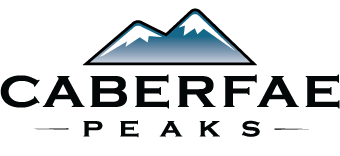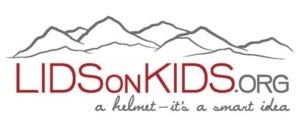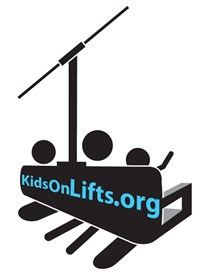Slope Safety
YOUR RESPONSIBILITY CODE
Skiing and snowboarding can be enjoyed in many ways. Regardless of how you decide to enjoy the slopes, always show courtesy to others and be aware that there are elements of risk in skiing that common sense and personal awareness can help reduce.
Observe the code listed below and share with other skiers the responsibility for a great skiing experience.
- Always stay in control. You must be able to stop or avoid people or objects.
- People ahead or downhill of you have the right-of-way. You must avoid them.
- Stop only where you are visible from above and do not restrict traffic.
- Look uphill and avoid others before starting downhill or entering a trail.
- You must prevent runaway equipment.
- Read and obey all signs, warnings and hazard markings.
- Keep off closed trails and out of closed areas.
- You must know how and be able to load, ride and unload lifts safely. If you need assistance, ask the lift attendant.
- Do not use lifts or terrain when impaired by alcohol or drugs.
- If you are involved in a collision or incident, share your contact information with each other and a ski area employee.
Know and Obey the Code. It’s Your Responsibility.
Officially endorsed by: National Ski Areas Association
SMART STYLE TERRAIN PARK SAFETY
The National Ski Areas Association and Burton Snowboards would like to welcome you to the “Smart Style” Terrain Park Safety initiative. This venture has been a cooperative effort to continue the proper use and progression of terrain parks at mountain resorts, while also delivering a unified message that is clear, concise, and effective.
We believe the “Smart Style” message along with existing safety messages; will help to heighten the sense of education and awareness about the proper use of terrain parks in a way that is not hard to deliver, or for that matter to digest.
The more people we can educate and get involved to help to spread the knowledge, the better!
The Smart Style Program:
There are four main messages that are associated with Smart Style:
- Make a Plan. Every time you use freestyle terrain, make a plan for each feature you want to use. Your speed, approach and take off will directly affect your maneuver and landing.
- Look Before You Leap. Scope around the jumps first, not over them. Know your landings are clear and clear yourself out of the landing area.
- Easy Style It. Start small and work your way up. (Inverted aerials not recommended).
- Respect Gets Respect. From the lift line through the park.
SKI TIPS FOR KIDS
Have your child know the “Your Responsibility Code.” It’s the seven rules of the slopes and many accidents can be avoided by adhering to the Code.
Ski helmets are a good idea. Make sure the helmet fits correctly. A ski helmet is not an item you buy for your child to grow into. Educate your child about the benefits and limitations of the helmet. Wearing a helmet doesn’t give permission to ski or snowboard faster or recklessly.
Dress in layers. Layering allows you to accommodate your body’s constantly changing temperature. For example, dress your kids in polypropylene underwear (top and bottoms) which feels good next to the skin, dries quickly, absorbs sweat and keeps you warm. Your kids should also wear a turtleneck, sweater and waterproof jacket.
Be prepared. Mother Nature has a mind of her own. Kids should wear a hat, 80 percent of heat-loss is through the head. Kids should also wear gloves or mittens (mittens are usually better for kids who are susceptible to cold hands).
Be sure they wear sun protection, even on cloudy days. The sun reflects off the snow and is stronger than you think! A ski vacation with a sun burn is no fun!
Kids should have sunglasses and goggles with them. Skiing is a lot more fun when you can see. Always wear eye protection.
When buying snow wear, look for fabric that is water and wind-resistant. Look for wind flaps to shield zippers, snug cuffs at wrists and ankles, collars that can be snuggled up to the chin and deep pockets.
Be sure you child has the name and phone number of your hotel written down on a piece of paper and it’s in a secure pocket. If you carry a cell phone, include this number too.
Put your kids in ski school to get them on the right track. Children’s instructors know how to teach kids, it’s their business. Then you’ll enjoy skiing with your kids and they will be proud to show you their skiing abilities.
Although it is very unlikely that your child would get separated from the instructor, be sure your child has a trail map and is able to remember the instructor’s name.
Make sure your child knows when to stop skiing. For example, if the clothing layer next to their skin stays wet and they’re chilled, if they’re injured, have a problem with equipment or even if they’re simply worn out. Educate them that it’s alright to stop before the end of the day and breaks are fun.
Make a meeting place if you get separated.
Starting your kids early, opens a world of adventure, fun, laughter and beautiful scenery unsurpassed, from many other sports and interests. It’s a tremendous feeling to learn that your kids’ fondest childhood memories were of your family ski trips and now skiing has become an important element in their lives. Your kids will be forever grateful to you when they become adults!
TIPS FOR PRIOR TO HITTING THE SLOPES
Get in shape. Don’t try to ski yourself into shape. You’ll enjoy skiing more if you’re physically fit.
Be sure to have your ski or snowboard bindings checked and adjusted correctly, this reduces the chance of injury.
When buying snow wear, look for fabric that is water and wind-resistant. Look for wind flaps to shield zippers, snug cuffs at wrists and ankles, collars that can be snuggled up to the chin and drawstrings that can be adjusted for comfort and keep wind out. Be sure to buy quality clothing and products.
Dress in layers. Layering allows you to accommodate your body’s constantly changing temperature. For example, dress in polypropylene underwear (top and bottoms), which feels good next to the skin, dries quickly, absorbs sweat and keeps you warm. Wear a turtleneck, sweater and jacket.
Be prepared. Mother Nature has a mind of her own. Bring a hat with you to the slopes, 80 percent of heat-loss is through the head. Wear gloves or mittens (mittens are usually better for those susceptible to cold hands).
Wear sun protection. The sun reflects off the snow and is stronger than you think, even on cloudy days!
Always wear eye protection. Have sunglasses and goggles with you. Skiing and snowboarding are a lot more fun when you can see.
TIPS FOR WHILE ON THE SLOPES
Take a lesson. Like anything, you’ll improve the most when you receive some guidance. The best way to become a good skier or snowboarder is to take a lesson from a qualified instructor.
The key to successful skiing/snowboarding is control. To have it, you must be aware of your technique, the terrain and the skiers/snowboarders around you. Be aware of the snow conditions and how they can change. As conditions turn firm, the skiing gets hard and fast. Begin a run slowly.
Skiing and snowboarding require a mental and physical presence.
The all-important warm-up run prepares you mentally and physically for the day ahead.
Drink plenty of water. Be careful not to become dehydrated.
Know your limits. Learn to ski and snowboard in control. Stop before you become fatigued and, most of all have fun.
If you’re tired, take a break.
Follow the “Your Responsibility Code,” the seven safety rules of the slopes.
You’ve arrived. You’re geared up and have a lift ticket. Now what? Go get a trail map at the base lodge or lift-ticket window. Take a few minutes to check it out. The lifts and the trails are marked on the map. The colored symbols next to the trails are the keys to enjoying your first few days on the slopes. Their shape and color indicate the difficulty of the trail.
![]()
Green Circle: Easier
Blue Square: More Difficult
Black Diamond: Most Difficult
Double-Black Diamond: Most Difficult, use extra caution
Orange Oval: Freestyle Terrain



